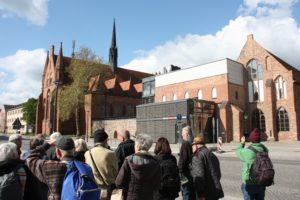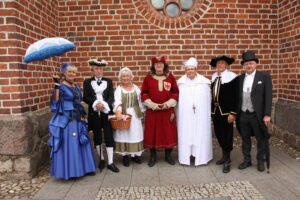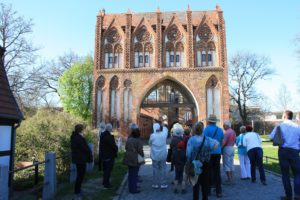Your individual guided tour
For your individual city tour, please send us a written enquiry with details of the date, location, number of people and personal details.
You can also use our ready-made form:
offer for guided tours from 2023Please send us an e-mail to touristinfo@vznb.de
Historical guided tour (available in english)
Passing many architectural sights and discovering new and surprising things about the four-gate city. Neubrandenburg is not only an interesting destination for visitors from out of town, people who have lived here for a long time can always discover new and surprising things in their city with us.
Surcharge for foreign language: 30 €
| Duration: | 1,5 – 2,0 hours |
| Group price up to 10 persons: | 90,00 € |
| Group price up to 20 persons: | 130,00 € |
| each additional person from the 21st person: | 7,00 € |
In German there are some more offers for guided tours, if you are interested, just switch on the german page.
Touristinfo Neubrandenburg
- accommodation office
- counselling and sale of souvenirs
- placing of guided journeys and city tours
- information and brochures about the city and environment
- information and offers for an accessible holiday
- maps for cycling and hiking
- ticketing and many others
Book your journey and your personal adventures with us. We will be happy to advice you!
Opening Times
Monday to Friday: 10:00 – 19:00 Uhr
Saturday: 10:00 – 16:00 Uhr
Please note our special opening times during city-centre events
Contact
Touristinfo Neubrandenburg
Marktplatz 1
17033 Neubrandenburg
Tel.: 0395 55 95127
E-Mail: touristinfo@neubrandenburg.de
City of Four Gates on Lake Tollensesee
www.neubrandenburg-touristinfo.de







